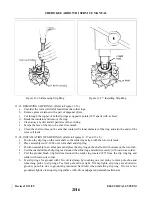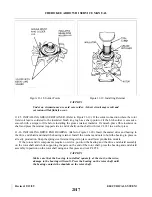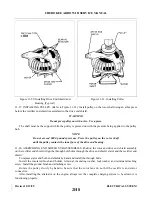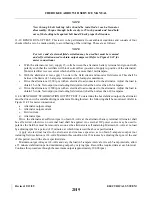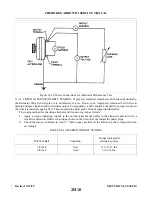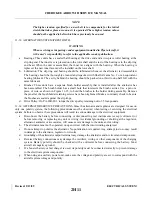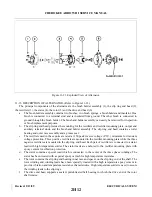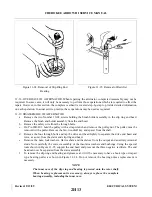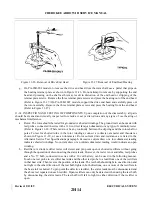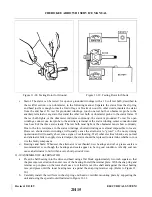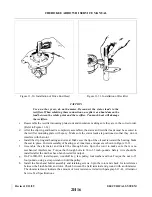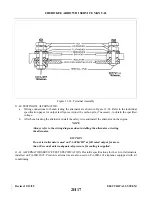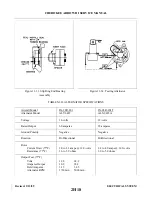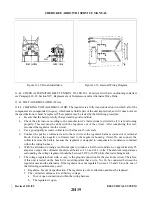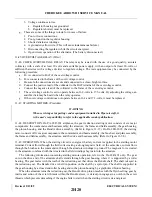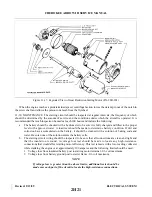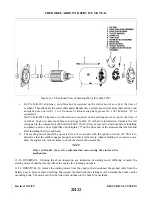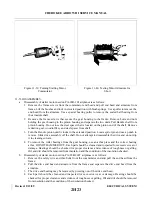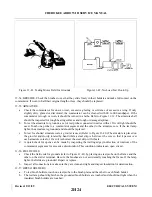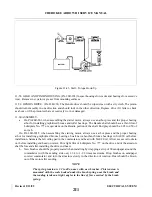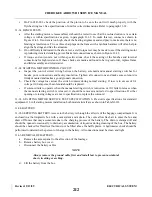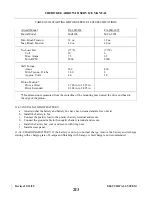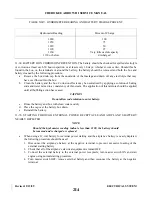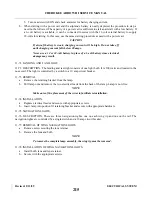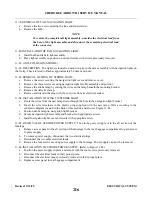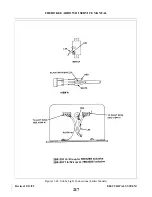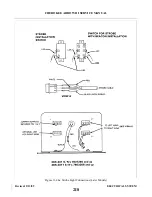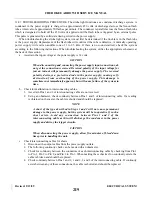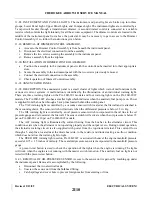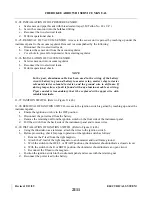
3. Voltage continues to rise.
a.
Regulator housing not grounded.
b. Regulator shorted, must be replaced.
g. These are some of the things to look for in case of failure:
1. Poor or loose connections.
2. Poor ground on the regulator housing.
3. Shorted alternator windings.
4. A grounded yellow wire. (This will cause instantaneous failure.)
5. Disconnecting the regulator while the circuit energized.
6. Open circuit operation of the alternator. (The battery disconnected.)
11-45. OVERVOLTAGE RELAY. (Wico)
11-46. CHECK OVERVOLTAGE RELAY. The relay may be tested with the use of a good quality, accurate
voltmeter, with a scale of at least 20-volts and a suitable power supply, with an output of at least 20-volts, or
s u fficient batteries with a voltage divider to regulate voltage. The test equipment may be connected by the
following procedure:
a.
B+ is connected to BAT of the overvoltage control.
b. B- is connected to the frame of the overvoltage control.
c.
Be sure both connections are secure and connected to a clean, bright surface.
d. Connect the positive lead of the voltmeter to the BAT terminal of the overvoltage control.
e.
Connect the negative lead of the voltmeter to the frame of the overvoltage control.
f.
The overvoltage control is set to operate between 16.2-volts to 17.3-volts. By adjusting the voltage, an
audible click may be heard when the relay operates.
g. If the overvoltage control does not operate between 16.2 and 17.3-volts, it must be replaced.
11-47. STARTING MOTORS. (Prestolite)
WARNING
When servicing or inspecting vendor equipment installed in Piper aircraft, it
is the user’s responsibility to refer to the applicable vendor publication.
11-48. DESCRIPTION. On PA-28R-201 airplanes, the gear reduction starting motor consists of six major
components: the commutator end head assembly, the armature, the frame and field assembly, the gear housing,
the pinion housing, and the Bendix drive assembly. (Refer to Figure 11-37.) On PA - 2 8 R - 2 0 1 T, the starting
motor consists of five major components: the commutator end head assembly, the brush set and plate assembly,
the frame and field assembly, the armature, and the drive end head assembly. (Refer to Figure 11-38.)
11-49. OPERATION. When the starting circuit is energized, battery current is applied to the starting motor
terminal. Current flows through the field coils creating a strong magnetic field. At the same time, current flows
through the brushes to the commutator, through the armature windings to ground. The magnetic force created
in the armature combined with that created in the field windings begins to turn the armature.
The following information concerning starting motors operation, refer to the PA-28R-201 only. The gear
cut on the drive end of the armature shaft extends through the gear housing, where it is supported by a roller
bearing. The gear mates with the teeth of the reduction gear that drives the Bendix shaft. The shaft is keyed to
the reduction gear. The Bendix drive is held in position on the shaft by a spirol pin. The shaft is supported in
the gear housing by a closed end roller bearing and in the pinion housing by a graphitized bronze bearing.
When the armature turns the reduction gear, the Bendix drive pinion meshes with the flywheel ring gear by
inertia and action of the screw threads within the Bendix sleeve. A detent pin engages in a notch in the screw
threads which prevents demeshing if the engine fails to start when the starting circuit is de-energized.
Revised: 2/13/89
2H20
CHEROKEE ARROW III SERVICE MANUAL
ELECTRICAL SYSTEM
Summary of Contents for ARROW III
Page 4: ...THIS PAGE INTENTIONALLY LEFT BLANK 1A4...
Page 12: ...THIS PAGE INTENTIONALLY LEFT BLANK 1A12...
Page 94: ...Figure 4 2 Wing Installation Revised 2 13 89 1D22 CHEROKEE ARROW III SERVICE MANUAL STRUCTURES...
Page 171: ...lH3 INTENTIONALLY LEFT BLANK...
Page 172: ...lH4 INTENTIONALLY LEFT BLANK...
Page 286: ...THIS PAGE INTENTIONALLY LEFT BLANK Revised 2 13 89 2A8...
Page 528: ...INTENTIONALLY LEFT BLANK 2K10 THRU 2L24 2K10...

